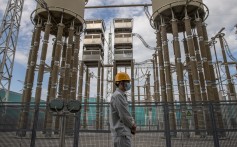…
China’s power shortage is partly due to slowing coal production, with some coal miners struggling to secure financing after China set goals to lower the use of coal in energy production.
#
What has caused China’s electricity shortages, and is Beijing’s carbon-neutral goal solely to blame?
Non-negotiable carbon reduction targets have forced many local provincial governments in China to impose rushed measures such as widespread power cuts, although an urgent shortage of coal has also emerged as a likely reason for the power supply crunch that is sweeping the nation.
China’s power supply crisis ratcheted up a notch over the past week with more than half of the country enduring power cuts, making it one of the most extreme examples of energy rationing in the nation’s history, especially considering the impact it is having on regular households.
Power cuts are commonplace in China and are usually restricted to industrial users, but their frequency has risen since the second half of last year and have now been extended to households.
A total of 16 of mainland China’s 31 provincial-level jurisdictions are rationing electricity as they race to meet Beijing’s annual emissions reduction targets after failing to make progress earlier in the year.
A year ago, President Xi Jinping made a surprise pledge that China would become
Earlier this year, Beijing outlined ways for it to step up efforts to control national energy usage by cutting energy consumption per unit of gross domestic product (GDP) by 3 per cent in 2021.
are politically non-negotiable. Accordingly, they have become a catalyst for all manner of policy – certainly including the power generation and consumption controls,” said Cory Combs, an analyst with consultancy firm Trivium China.
“A lot of what we’re seeing in China’s policymaking – including in early pilots on environmental valuation – is an exploration of how to weigh short-term financial costs against long-term holistic benefits.”


Combs added that much of the recent escalations in local energy curbs are due to the pressure to meet year-end emissions targets, which are “hard deadlines”, unlike the goals for the first half of the year that offered provinces a chance to remedy their shortcomings.
Beijing also doubled down on its efforts by urging local provincial authorities to curb high-energy-consumption activities and high-emissions projects.
There have, however, been concerns that the provincial energy curbs are short-sighted and unfair to users, especially household consumers.
On Sunday, the state-run People’s Daily criticised local officials for using forceful means to achieve their annual environmental performance goals, suggesting they should not take a “one-size-fits-all” approach to curbing power usage.


